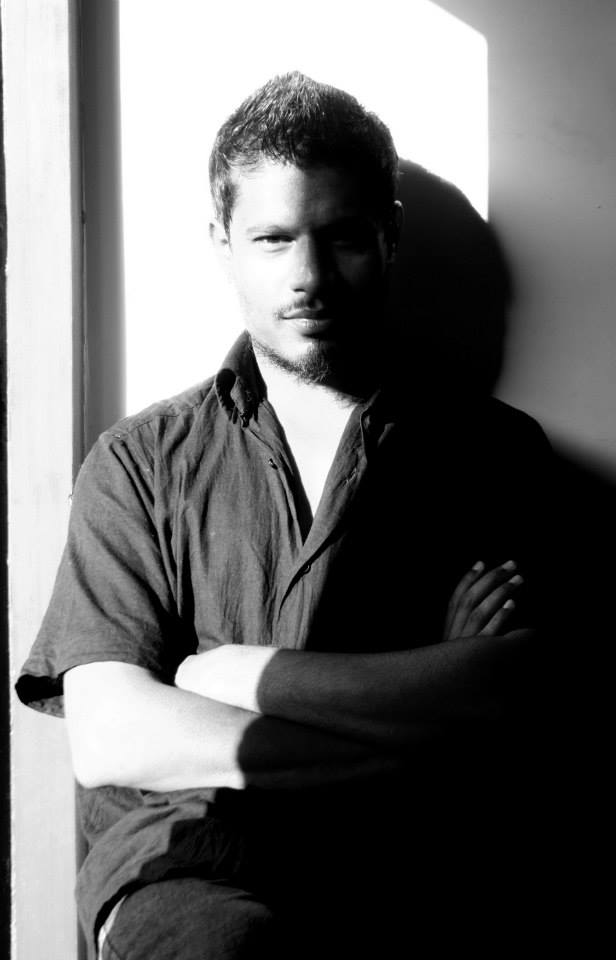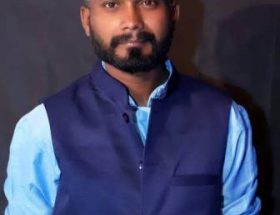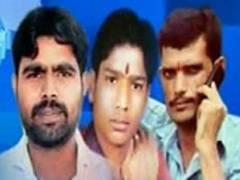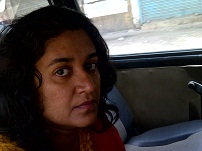Yogesh Maitreya
 Progressive, radical and democratic movements in Maharashtra, have been people’s movements essentially led by Shudra and ex-untouchable leaders. Mahatma Phule and Dr. Ambedkar were the major proponents who contributed profoundly to building up the consciousness of revolt among Dalits against the injustice of caste hierarchy, and especially the brutal practice of untouchability. Their movements embodied ‘annihilation of caste’ as the prime concern and objective. This is what most distinguishes them from many other progressive movements for reformation led by Savarnas (including M.K Gandhi who claimed to be a saviour of the untouchables in India but did nothing either to annihilate the notion of caste from the minds of Indians or its practice by them). With Phule and Dr. Ambedkar began the creative assertion of Dalits against Brahmanical hegemony, which, in the the idea of superiority of caste hierarchy, unfortunately seeped down to other castes as well, in the vertical system. The practice of untouchability was at its worst, attaining a gruesome, inhuman stage in Maharashtra during the reign of the Brahmin-Peshwas of Pune in the early nineteenth century.
Progressive, radical and democratic movements in Maharashtra, have been people’s movements essentially led by Shudra and ex-untouchable leaders. Mahatma Phule and Dr. Ambedkar were the major proponents who contributed profoundly to building up the consciousness of revolt among Dalits against the injustice of caste hierarchy, and especially the brutal practice of untouchability. Their movements embodied ‘annihilation of caste’ as the prime concern and objective. This is what most distinguishes them from many other progressive movements for reformation led by Savarnas (including M.K Gandhi who claimed to be a saviour of the untouchables in India but did nothing either to annihilate the notion of caste from the minds of Indians or its practice by them). With Phule and Dr. Ambedkar began the creative assertion of Dalits against Brahmanical hegemony, which, in the the idea of superiority of caste hierarchy, unfortunately seeped down to other castes as well, in the vertical system. The practice of untouchability was at its worst, attaining a gruesome, inhuman stage in Maharashtra during the reign of the Brahmin-Peshwas of Pune in the early nineteenth century.
About a century or more later, in 1972, it was the incidence of an atrocity in Bavada village of Indapur Tehsil of Pune that cemented the consciousness of revolt among Dalit youth from Bombay. In Bavada, “A social and economic boycott of the scheduled castes was initiated by the castes Hindus by denying them the basic necessities of life. The reason for this was that a Dalit youth had ‘dared’ to contest an election to the local Zilla Parishad” (S.D, 1973). These Dalit youth from Bombay, poets and writers among them, formed the Dalit Panthers, a militant movement, primarily to fight back against the atrocities on Dalits which were rampant in Maharashtra during the 1970s. In the perennial legacy of assertion, the Dalit Panther movement is undoubtedly a major milestone. Although the Dalit Panther focused primarily on the issue of rampant atrocities against Dalits at the time, there were many formative forces behind it – ‘the socio-economic plight of Dalits, the increasing atrocities, the powerful literature of revolt and the raised consciousness of Dalit youth about their conditions were the more decisive factors which led to the emergence of the Dalit Panther movement’. (Murugkar, 1991) This was the collective, vocal and agitated response of Dalits of Maharashtra in answer to the atrocities perpetrated by caste Hindus and Savarnas, in a tit-for-tat manner.
Rise and fall of Dalit Panther movement
The rise of Dalit Panther movement during 1970s in Maharashtra was a unique event in the history of struggle and assertion of Dalits against casteist forces. The radically explicit strategies, vehemently truthful speeches of Panthers such as Namdeo Dhasal and Raje Dhale (who were among the founding members of Dalit Panthers and its initial leaders), their fierce poetry with a unique, skilful tone of revolt had shaken up the state and casteist authorities of that time, which quickly perceived Dalit Panthers as the foremost threat to their oppressive hegemony that had neglected issues of Dalits and excluded them from development. The leaders of Dalit Panthers were all young; mostly budding but brilliant poets and writers, and they immediately earned popular support in urban Bombay and rural Maharashtra as a result of their radical actions, morchas and inflammatory speeches against caste authorities, and gathering of hundreds or so in numbers at the sites of incidents to listen to the victims and settle matters with caste hooligans in villages, and feudal lords among them, primarily Marathas.

But soon, the Dalit Panthers witnessed waves of ideological splintering among the leadership, firstly and mainly between Namdeo Dhasal and Raja Dhale, and this process continued under the leadership of later Panthers. This was the second symbolic message of how Dalit expression of revolt and struggle to win their basic rights could be destroyed by personal clashes. The first was the factionalization of the Republican Party of India (RPI) which fell victim to the cunning strategies of co-option by the Indian National Congress. It left the Dalit masses leaderless, which meant that the issues of Dalits were either neglected or deceitfully sidelined by silencing their voice, by co-opting their leaders into caste hegemonic party politics. Within a decade of its marvelous rise, the fall of the Dalit Panthers led to another period of void, in which the Dalit masses were left baffled on issues of leadership. By 1989, the wave of spirited agitations against atrocities in Maharashtra was almost extinguished; meanwhile, the atrocities continued unabated.
Birth of Hindutva forces and the Shiv Sena in Maharashtra
A most tragic shift in Indian society came after 1989. The nation was torn, degraded and cut into pieces by fundamentalist, xenophobic, political and social forces, especially after Hindu mythology was televised and people’s minds infected with the idea of ‘Hindu Nation’, though the idea of ‘Hindu Nation’ was new for Indian society until then. 1989 was the beginning of another era in which casteist forces symbolically cemented their roots. In Maharashtra, the jingoistic local Marathi party Shiv Sena and the BJP (Bharatiya Janata Party) formed an alliance in 1989. By 1989, Bal Thackeray, the founder of Shiv Sena, had switched his famous image of being anti-south Indian and anti-north Indian to pro-Hindutva (the term manufactured by V.D Savarkar to synonymise the Hindu religion and his idea of Hinduism with Indian people), which supplied the ideological fuel to BJP in Maharashtra as they formed a political coalition which continued thereafter. With opportunistic strategies, the Shiv Sena kept changing its agendas.

Meanwhile, the party’s shakhas (branches) spread to the interiors of Maharashtra in which members were majorly and dominantly caste Hindus, OBCs and Marathas. Through his anti-Dalit rhetoric and burlesque speeches on failed politicians, Bal Thackeray gained popularity among Marathas, and disgruntled, unemployed youth of Bombay. Though the Shiv Sena spread its wings to the villages of Maharashtra, it essentially remained an urban-centred party, largely limiting its cacophonic activities to Bombay. During its dominance on the political scene in Bombay until 1999, major atrocities like Ramabai Nagar Massacre of 1997, Worli riots and the infamous Bombay riots of 1992-93 occurred, in which the role of the Shiv Sena was of a highly suspicious nature. This was the time when the Shiv Sena was in its fascist verve, and to supplement the political ideology of coalition with the BJP it served to provide ‘fanatic cadres, criminals and goonda elements and non-Brahmin (largely non-Marathas, non-Dalits – Other Backward Castes) mass base’. (Omvedt, 1990).
The autocratic attitude of Shiv Sena can be sensed from one of the incidents during its hold on the Brihanmumbai Municipal Corporation, in which ‘the office of regional daily’ Deshonnati from Akola, ‘was ransacked and its journalists as well as other employees were attacked. The reason for the attack was that this daily had published a series of detailed news reports about the inciting speeches delivered by Gulabrao Gawande, a minister of state in the Joshi government, after Ghatkopar firing’. (Bal, 1997) In this, and several other cases, the names of cadres and leaders of Shiv Sena were raised but no actions were taken against them. Meanwhile, the Shiv Sena also adopted strategies of co-opting the Dalit leaders, of whom Namdeo Dhasal was an example. An ex-Panther, Ramdas Athwale, is the latest one to form a coalition with the Shiv Sena-BJP alliance in Maharashtra.

This only weakened the Dalit voice on political fronts. In this process of seeking political gain by the Dalit leaders, by bonding with anti-Dalit and Hindu fundamentalist ideologies such as those of the Shiv Sena and BJP, the voice of Dalit protest against atrocities is lost. In a recent interview I conducted in Beed, an atrocity prone area in Maharashtra, Mrs. Manisha Tokle, the human rights activist and woman leader of ‘Campaign for Human Rights’ said that “in Beed region, most of the atrocities are perpetrated by Wanjara community (upper caste and feudal lords in Beed) and Marathas upon Dalits”. Listening to her narrating the latest stories of atrocities, it was loud and clear that in any incidence of atrocity, the police almost always refused to register a case under the SC/ST Atrocity act. It is evident from the empirical evidence and vast experience of Mrs. Tokle that the venom of untouchability and hatred against Dalits is being expressed through various atrocities.
Further, Shiv Sena’s idea of Hindutva and its campaign ‘garv se kaho hum Hindu hai’ (‘say with pride that I am Hindu’) only instigated the Savarnas in villages against Dalits throughout Maharashtra, since they are mostly progressive and critical of Hindu mythological texts that consider human beings as unequal, and the cannibalistic system of castes. Dalits have faced a number of atrocities simply because of their assertion against feudal/caste/Hindutva forces in villages or even in urbanised settings. In addition, major parties like the Congress and BJP, which manages ‘a sophisticated Brahman leadership with control of newspapers and mass organisations (among peasants, youth, tribals and women) throughout the state’ (Omvedt, 1990), combine to snuff out waves of Dalit assertion by excluding Dalit issues from print and electronic media. Thus, in the villages of Maharashtra, these Hindutva forces play an important role in the creation of a structure in the minds of people, in which atrocities against Dalits would eventually be seen as legitimate acts.
Atrocities as structural violence
By ‘cultural violence’ Galtung wants to suggest ‘those aspects of culture, the symbolic sphere of our existence- exemplified by religion and ideology, language and art, empirical science and formal science (logics, mathematics)- that can be used to justify or legitimise direct or structural violence’. (Johan, 1990). Dalit assertion and atrocities against them are not only interlinked and interrelated but also contradictory forces. Perpetrators of atrocities advocate the ideology and dogma of caste hierarchy against Dalit assertion of the ‘educate, agitate and organise’ principle propounded by Dr. Ambedkar. Here, in this domain of atrocities in Maharashtra, the contradiction between the ideologies of these two groups is a key element leading to the phenomena of atrocity, framing it as structural violence in the Indian context.
In villages of Maharashtra, the notion of caste and its practice is rooted in subtle yet direct fashion. The philosophy of the caste system does not allow Dalits upward mobility in either education or agitation or organisation. The Hindutva forces in the hamlets of Maharashtra have only cemented the philosophy of the caste system, which essentially propagates the notion of purity/impurity, considering Dalits as impure in the space of the caste system. Therefore, Dalits, despite a long, continuous, and democratic struggle for their emancipation and annihilation of caste in the post-independence era, have been marginalised in almost every sphere of social life.
Assertion by Dalits in Maharashtra challenges the dogmatic hegemony of caste Hindus in villages, where the latter own the institutions of power such as land, sugarcane cooperative businesses, and administration. In the entire structure of the village in Maharashtra, Dalits are kept at the margins and, as soon as they endeavor to progress upward in the domain of education, culture, and social life, which, according to caste Hindus count as practices against the caste system, structural violence takes place in which the perpetrator perceives his or her act as legitimised in the structure of caste hierarchy. Atrocities against Dalits in the villages of Maharashtra are the foremost examples of structural violence.
~
Bibliography
Bal, P. (1997). Driven to the wall: Dalits under Shiv Sena-BJP rule. Economic and Political Weekly.
Johan, G. (1990). Cultural Violence. Journal of Peace research, pp 291-305.
Murugkar, L. (1991). Dalit Panther Movement in Maharashtra. BOMBAY: Popular Prakashan Pvt Ltd.
Omvedt, G. (1990). Hinduism and Politics. Economic and Political Weekly.
S.D. (1973). Children of God became Panther. Economic and Political Weekly.
~~~
Yogesh says:
My name is Yogesh Maitreya. I am from Nagpur. I am doing my M.A in Criminology and Justice (2013-15) from TISS (Tata Institute of Social Sciences, Mumbai).










